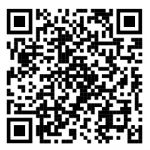| Asia Pacific Journal of Corpus Research Vol. 4, No. 1, pp. 61-71 |
| Abbreviation: APJCR |
| e-ISSN: 2733-8096 |
| Publication date: 31 August 2023 |
| Received: 21 May 2023 / Received in Revised Form: 3 August 2023 / Accepted: 12 August 2023 |
| DOI: https://doi.org/10.22925/apjcr.2023.4.1.61 |
Effects of corpus use on error identification in L2 writing |
| Yoshiho Satake (Aoyama Gakuin University), JAPAN |
| Copyright 2023 APJCR
This is an open access article distributed under the terms of the Creative Commons Attribution License 4.0, which permits unrestricted, distribution, and reproduction in any medium, provided the original work is properly cited. |
Abstract |
| This study examines the effects of data-driven learning (DDL)—an approach employing corpora for inductive language pattern learning—on error identification in second language (L2) writing. The data consists of error identification instances from fifty-five participants, compared across different reference materials: the Corpus of Contemporary American English (COCA), dictionaries, and no use of reference materials. There are three significant findings. First, the use of COCA effectively identified collocational and form-related errors due to inductive inference drawn from multiple example sentences. Secondly, dictionaries were beneficial for identifying lexical errors, where providing meaning information was helpful. Finally, the participants often employed a strategic approach, identifying many simple errors without reference materials. However, while maximizing error identification, this strategy also led to mislabeling correct expressions as errors. The author has concluded that the strategic selection of reference materials can significantly enhance the effectiveness of error identification in L2 writing. The use of a corpus offers advantages such as easy access to target phrases and frequency information—features especially useful given that most errors were collocational and form-related. The findings suggest that teachers should guide learners to effectively use appropriate reference materials to identify errors based on error types. . |
Keywords |
| Data-Driven Learning (DDL), Corpus Linguistics, Error Identification, Essay Writing, English Language Teaching |
References |
| Bartholomae, D. (1980). The study of error. College Composition and Communication, 31, 253–269.
Burt, M. (1975). Error analysis in the adult EFL classroom. TESOL Quarterly, 9, 53-63. Corder, S. P. (1967). The significance of learners’ errors. International Review of Applied Linguistics, 5, 161-170. Crosthwaite, P. (2017). Retesting the limits of data-driven learning: Feedback and error correction. Computer Assisted Language Learning, 30(6), 447-473. Ellis, R. (2008). The Study of Second Language Acquisition (2 ed.). Oxford: Oxford University Press. Hamid, M. O., & Linh, D. D. (2014). The problematic of second language errors. ARAL, 37(2), 123-144. Izumi, E., Uchimoto, K., & Isahara, H. (2004). Nihonjin 1200nin no Eigo Speaking Corpus (The NICT JLE Corpus). Tokyo: Alc. Johns, T. (1991). Should you be persuaded: two examples of data-driven learning. In Johns, T., & King, P. (Eds.), Classroom Concordancing (English Language Research Journal 4, 1-16). Birmingham: ELR. Khalil, A. (1985). Communicative error evaluations: native speakers’ evaluation and interpretation of written errors of Arab EFL learners. TESOL Quarterly, 19, 225-351. Konishi, T., & Minamide, K. (Eds.). (2006). Genius English-Japanese Dictionary (4th ed.). Tokyo: Taishukan. Lennon, P. (1991). Error: Some Problems of Definition, Identification, and Distinction. Applied Linguistics, 12(2), 180-196. Pike-Baky, M., & Blass, L. (2007). Mosaic 1 Writing Student Book (Silver ed.). New York: McGraw-Hill Richards, J. (1971). A non-contrastive approach to error analysis. ELT Journal, 25, 204-219. Satake, Y. (2020). How error types affect the accuracy of L2 error correction with corpus use. Journal of second language writing, 50, 100757. Satake, Y. (2022). Effects of data-driven learning in on-demand classes. Journal of Corpus-based Lexicology Studies, 4, 1-13. Saville-Troike, M., & Barto, K. (2016). Introducing Second Language Acquisition (3rd ed.). Cambridge: Cambridge University Press. Schachter, J., & Celce-Murcia, M. (1977). Some reservations concerning error analysis. TESOL Quarterly, 11, 141-51. Taylor, G. (1986). Errors and explanations. Applied Linguistics, 7(2), 144-166. Tono, Y., Satake, Y., & Miura, A. (2014). The effects of using corpora on revision tasks in L2 writing with coded error feedback. ReCALL, 26(2), 147-162. Yoon, H., & Jo, J. (2014). Direct and indirect access to corpora: An exploratory case study comparing students’ error correction and learning strategy use in L2 writing. Language Learning & Technology, 181, 96-117. |
The Authors |
|
Yoshiho Satake is an Associate Professor at Aoyama Gakuin University. She received her Ph.D. from Tokyo University of Foreign Studies in 2018 in corpus linguistics. Her principal research lies in the field of data-driven learning (DDL). |
The Authors’ Addresses |
| First and Corresponding Author Yoshiho Satake Associate Professor Aoyama Gakuin University 4-4-25 Shibuya, Shibuya-ku, Tokyo, 1508366, JAPAN E-mail: t31330@aoyamagakuin.jp  DOI QR CODE |